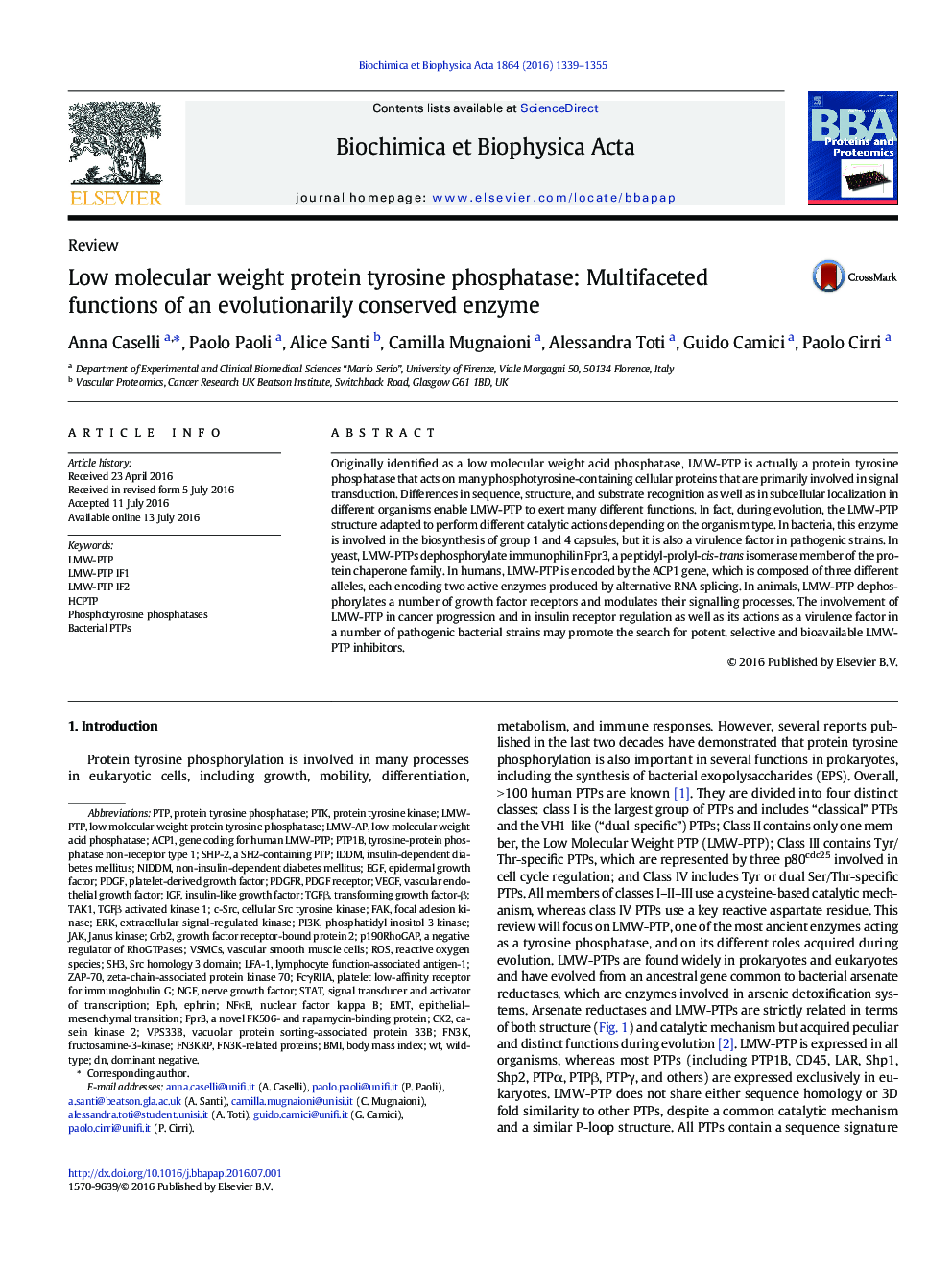| Article ID | Journal | Published Year | Pages | File Type |
|---|---|---|---|---|
| 10536748 | Biochimica et Biophysica Acta (BBA) - Proteins and Proteomics | 2016 | 17 Pages |
Abstract
Originally identified as a low molecular weight acid phosphatase, LMW-PTP is actually a protein tyrosine phosphatase that acts on many phosphotyrosine-containing cellular proteins that are primarily involved in signal transduction. Differences in sequence, structure, and substrate recognition as well as in subcellular localization in different organisms enable LMW-PTP to exert many different functions. In fact, during evolution, the LMW-PTP structure adapted to perform different catalytic actions depending on the organism type. In bacteria, this enzyme is involved in the biosynthesis of group 1 and 4 capsules, but it is also a virulence factor in pathogenic strains. In yeast, LMW-PTPs dephosphorylate immunophilin Fpr3, a peptidyl-prolyl-cis-trans isomerase member of the protein chaperone family. In humans, LMW-PTP is encoded by the ACP1 gene, which is composed of three different alleles, each encoding two active enzymes produced by alternative RNA splicing. In animals, LMW-PTP dephosphorylates a number of growth factor receptors and modulates their signalling processes. The involvement of LMW-PTP in cancer progression and in insulin receptor regulation as well as its actions as a virulence factor in a number of pathogenic bacterial strains may promote the search for potent, selective and bioavailable LMW-PTP inhibitors.
Keywords
SH3PDGFLFA-1CK2IDDMZAP-70TAK1PDGFRVSMCsNIDDMFcγRIIaPI3KSHP-2GRB2ACP1Vps33bPTP1Bc-Srcp190RhoGAPPTKLMW-PTPfructosamine-3-kinaseEGFIGFTGFβFAKERKPTPNGFJanus kinaseNFκBROSSrc homology 3 domainSTATLymphocyte function-associated antigen-1Ephephrintransforming growth factor-βEMTInsulin-dependent diabetes mellitusnon-insulin-dependent diabetes mellitusVascular smooth muscle cellsbody mass indexBMIepidermal growth factordominant negativeVascular endothelial growth factorVascular Endothelial Growth Factor (VEGF)platelet-derived growth factornerve growth factorInsulin-like growth factornuclear factor kappa Bphosphatidyl inositol 3 kinaseSignal transducer and activator of transcriptionwild-typeProtein tyrosine phosphataseProtein tyrosine kinasegrowth factor receptor-bound protein 2JAKCasein kinase 2extracellular signal-regulated kinaseEpithelial–mesenchymal transitionReactive oxygen speciesPDGF receptor
Related Topics
Physical Sciences and Engineering
Chemistry
Analytical Chemistry
Authors
Anna Caselli, Paolo Paoli, Alice Santi, Camilla Mugnaioni, Alessandra Toti, Guido Camici, Paolo Cirri,
